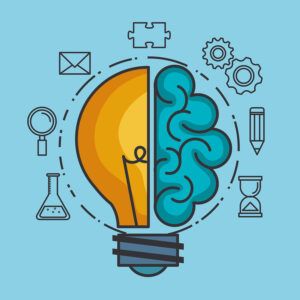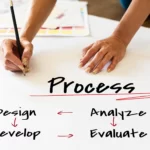Exploring Creative Solutions: A Step-by-Step Journey through Design Thinking
Design thinking is an inventive approach to solving problems, centered around understanding user needs and viewpoints. It follows a sequence of stages that lead the way from identifying the problem to crafting and testing solutions. The process entails:
- Empathize: Commence by comprehending the problem and those impacted by it. Engage in observing and conversing with users to gain profound insights into their requirements and perspectives.
- Define: After gaining a clear grasp of the problem, proceed to define it. This step involves consolidating the information amassed during the empathy phase and pinpointing the chief obstacles and prospects.
- Ideate: In this phase, foster the generation of concepts for potential solutions. Employ brainstorming and other creative techniques to stimulate ingenuity and formulate a wide array of ideas.
- Prototype: Transition to the prototype stage, where you craft a rudimentary, simplified version of your solution. This could encompass a sketch, a physical model, or a digital mockup. The objective is to construct something that can be experimented with and honed.
- Test: Lastly, put your prototype to the test with users to amass feedback and enhance your solution. This entails observing how users engage with the prototype and seeking their input to effect improvements.
Exploring Design Thinking: A Guided Step-by-Step Approach to Innovative Problem Solving
This creative process of design thinking encapsulates empathy, definition, ideation, prototyping, and testing – all with the aim of addressing intricate problems in an innovative, user-centered manner.
Design Thinking is a problem-solving methodology that focuses on empathizing with users, defining the problem,
Solving Problems with Design Thinking: A User-Focused Approach to Innovation
Design thinking is an iterative process, which means that you may need to cycle through these steps multiple times to refine and improve your solution. By following these steps, you can create solutions that are more effective, user-friendly, and innovative.





